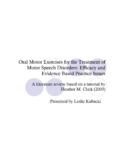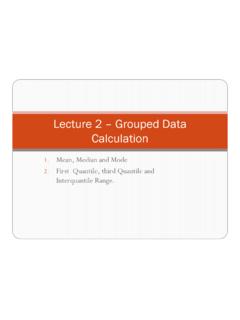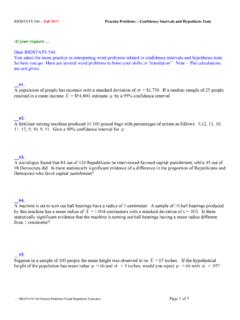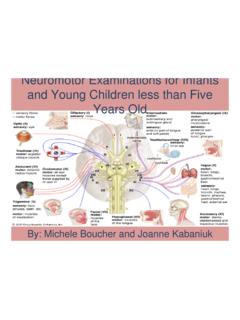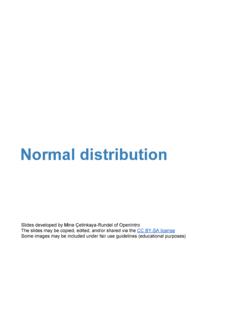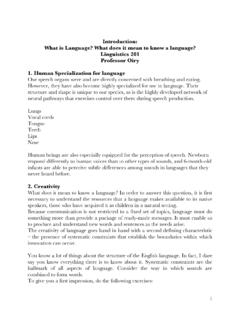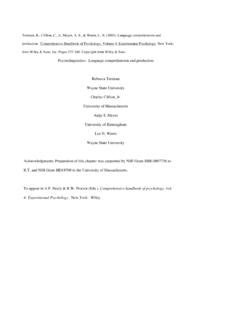Transcription of Tractatus Logico-Philosophicus - UMass
1 Tractatus Logico-PhilosophicusLogisch-philosophisc he AbhandlungBy Ludwig WittgensteinFirst published by Kegan Paul (London), EDITION, (MAY2, 2022),containing the original German, alongside both the Ogden/Ramsey, and Pears/McGuinness English at: Bertrand Russell, F. R. WITTGENSTEIN STractatus Logico-Philosophicus , whether ornot it prove to give the ultimate truth on the matters with which itdeals, certainly deserves, by its breadth and scope and profundity, tobe considered an important event in the philosophical world. Startingfrom the principles of Symbolism and the relations which are necessarybetween words and things in any language, it applies the result of thisinquiry to various departments of traditional philosophy, showing ineach case how traditional philosophy and traditional solutions ariseout of ignorance of the principles of Symbolism and out of misuse logical structure of propositions and the nature of logical in-ference are first dealt with.
2 Thence we pass successively to Theory ofKnowledge, Principles of Physics, Ethics, and finally the Mystical (dasMystische).In order to understand Mr. Wittgenstein s book, it is necessaryto realize what is the problem with which he is concerned. In thepart of his theory which deals with Symbolism he is concerned withthe conditions which would have to be fulfilled by a logically perfectlanguage. There are various problems as regards language. First,there is the problem what actually occurs in our minds when we uselanguage with the intention of meaning something by it; this problembelongs to psychology. Secondly, there is the problem as to what isthe relation subsisting between thoughts, words, or sentences, andthat which they refer to or mean; this problem belongs to , there is the problem of using sentences so as to convey truthrather that falsehood; this belongs to the special sciences dealing withthe subject-matter of the sentences in question.
3 Fourthly, there is thequestion: what relation must one fact (such as a sentence) have toanother in order to becapableof being a symbol for that other? Thislast is a logical question, and is the one with which Mr. Wittgensteinis concerned. He is concerned with the conditions foraccurateSymbol-ism, for Symbolism in which a sentence means something quitedefinite. In practice, language is always more or less vague, so thatwhat we assert is never quite precise. Thus, logic has two problemsto deal with in regard to Symbolism: (1) the conditions for senserather than nonsense in combinations of symbols; (2) the conditionsfor uniqueness of meaning or reference in symbols or combinations ofsymbols.
4 A logically perfect language has rules of syntax which preventnonsense, and has single symbols which always have a definite andunique meaning. Mr. Wittgenstein is concerned with the conditions fora logically perfect language not that any language is logically perfect,or that we believe ourselves capable, here and now, of constructing alogically perfect language, but that the whole function of language isto have meaning, and it only fulfills this function in proportion as itapproaches to the ideal language which we essential business of language is to assert or deny facts. Giventhe syntax of language, the meaning of a sentence is determined assoon as the meaning of the component words is known. In order that acertain sentence should assert a certain fact there must, however thelanguage may be constructed, be something in common between thestructure of the sentence and the structure of the fact.
5 This is perhapsthe most fundamental thesis of Mr. Wittgenstein s theory. That whichhas to be in common between the sentence and the fact cannot, hecontends, be itself in turnsaidin language. It can, in his phraseology,only beshown, not said, for whatever we may say will still need tohave the same first requisite of an ideal language would be that there shouldbe one name for every simple, and never the same name for two dif-ferent simples. A name is a simple symbol in the sense that it has noparts which are themselves symbols. In a logically perfect languagenothing that is not simple will have a simple symbol. The symbol forthe whole will be a complex , containing the symbols for the parts. (Inspeaking of a complex we are, as will appear later, sinning againstthe rules of philosophical grammar, but this is unavoidable at theoutset.)
6 Most propositions and questions that have been written aboutphilosophical matters are not false but senseless. We cannot, therefore,answer questions of this kind at all, but only state their questions and propositions of the philosophers result from thefact that we do not understand the logic of our language. They areof the same kind as the question whether the Good is more or lessidentical than the Beautiful ( ).) What is complex in the worldis a fact. Facts which are not compounded of other facts are what callsSachverhalte, whereas a fact which may consist oftwo or more facts is aTatsache: thus, for example Socrates is wise is aSachverhalt, as well as aTatsache, whereas Socrates is wise andPlato is his pupil is aTatsachebut not compares linguistic expression to projection in geometry.
7 Ageometrical figure may be projected in many ways: each of these wayscorresponds to a different language, but the projective properties ofthe original figure remain unchanged whichever of these ways maybe adopted. These projective properties correspond to that which inhis theory the proposition and the fact must have in common, if theproposition is to assert the certain elementary ways this is, of course, obvious. It is impossi-ble, for example, to make a statement about two men (assuming for themoment that the men may be treated as simples), without employingtwo names, and if you are going to assert a relation between the twomen it will be necessary that the sentence in which you make theassertion shall establish a relation between the two names.
8 If we say Plato loves Socrates , the word loves which occurs between the word Plato and the word Socrates establishes a certain relation betweenthese two words, and it is owing to this fact that our sentence is ableto assert a relation between the persons named by the words Plato and Socrates . We must not say, the complex sign aR b says that astands in a certain relationRtob ; but we must say, that a stands ina certain relation to b saysthataR b ( ).Mr. Wittgenstein begins his theory of Symbolism with the state-ment ( ): We make to ourselves pictures of facts. A picture, he says,is a model of the reality, and to the objects in the reality correspond theelements of the picture: the picture itself is a fact.
9 The fact that thingshave a certain relation to each other is represented by the fact that inthe picture its elements have a certain relation to one another. In thepicture and the pictured there must be something identical in orderthat the one can be a picture of the other at all. What the picture musthave in common with reality in order to be able to represent it afterits manner rightly or falsely is its form of representation ( , ).We speak of a logical picture of a reality when we wish to implyonly so much resemblance as is essential to its being a picture in anysense, that is to say, when we wish to imply no more than identityof logical form. The logical picture of a fact, he says, is picture can correspond or not correspond with the fact and be ac-cordingly true or false, but in both cases it shares the logical formwith the fact.
10 The sense in which he speaks of pictures is illustratedby his statement: The gramophone record, the musical thought, thescore, the waves of sound, all stand to one another in that pictorialinternal relation which holds between language and the world. Toall of them the logical structure is common. (Like the two youths,their two horses and their lilies in the story. They are all in a certainsense one) ( ). The possibility of a proposition representing afact rests upon the fact that in it objects are represented by so-called logical constants are not represented by signs, but arethemselves present in the proposition as in the fact. The propositionand the fact must exhibit the same logical manifold , and this cannotbe itself represented since it has to be in common between the factand the picture.
